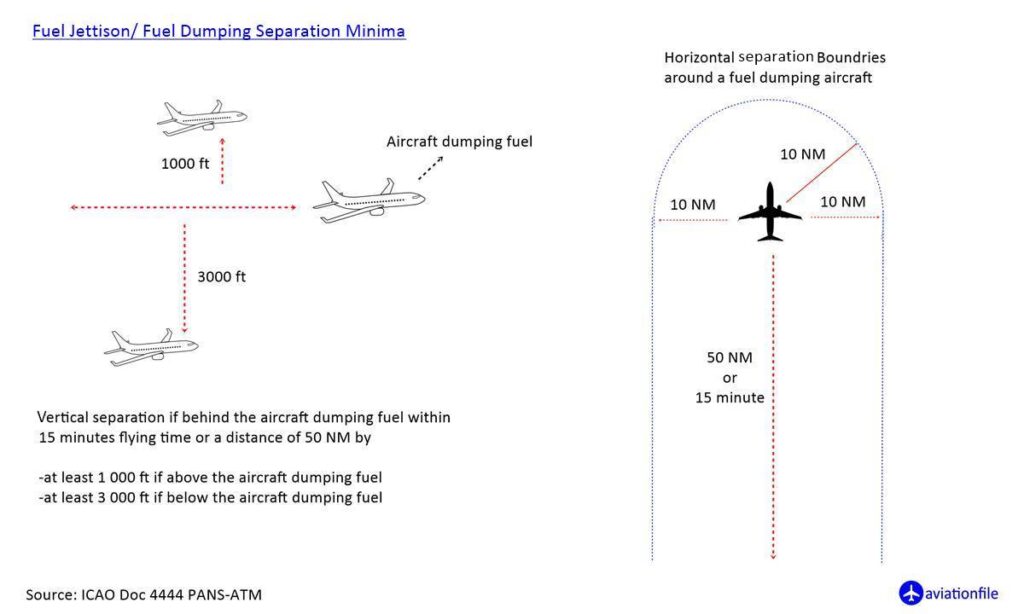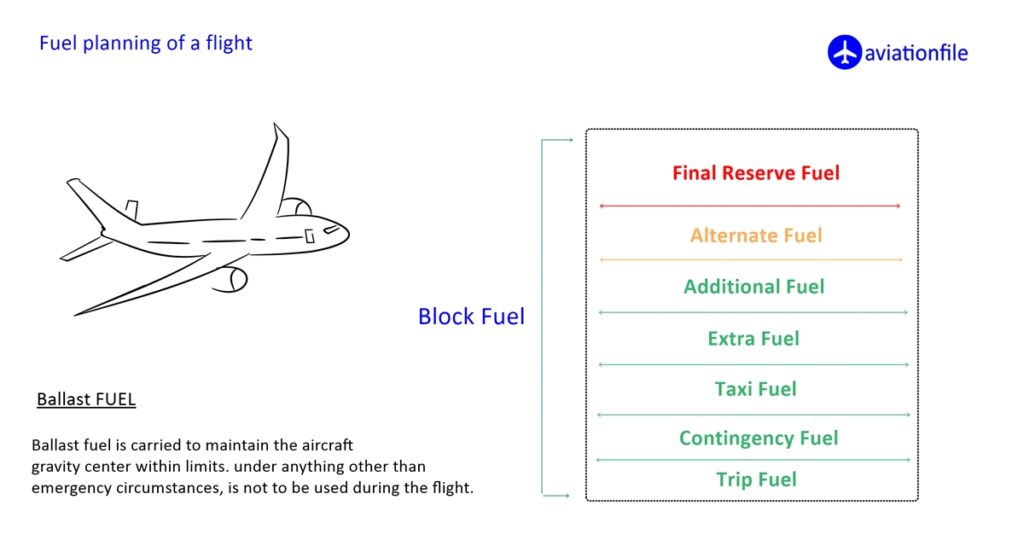Fuel Jettison and Fuel Dumping
Ever wondered why planes sometimes release fuel mid-air? While it might seem dramatic, both “fuel jettison” and “fuel dumping” serve crucial purposes in aviation safety, each with distinct reasons and procedures.
Fuel Jettison: Landing Light
Imagine an aircraft encounters an engine issue shortly after takeoff. Landing at full weight could be risky. Enter fuel jettison, a controlled release of fuel at a high altitude over designated, unpopulated areas. This reduces weight for a safe emergency landing, minimizing environmental impact thanks to high altitude dispersal.

Fuel Dumping: Emergency Eject
Picture a potential in-flight fire hazard. In this extremely rare scenario, fuel dumping becomes the last resort. Fuel is rapidly released, often near airports or water depending on the emergency and regulations. While this has a more significant environmental impact due to the lower altitude, it’s prioritized over an in-flight disaster.
Key Differences:
- Mission: Jettison for landing weight reduction, dumping for in-flight emergencies.
- Control: Jettison is controlled and planned, dumping is rapid and reactive.
- Impact: Jettison has minimal environmental impact, dumping has more impact but deemed necessary for safety.

Important Notes:
- Both procedures are highly regulated, with specific aircraft capabilities and environmental concerns dictating their use.
- Pilots only use them as a last resort, exhausting all other options first.
- Advance notice is given to authorities whenever possible to minimize environmental impact.
More Than Just Headlines:
While uncommon, understanding fuel jettison and dumping sheds light on the intricate decisions pilots make to prioritize safety and minimize environmental impact in emergency situations. These procedures are constantly evolving, with regulations and research striving to further reduce their environmental footprint
References and Further Reading:
- Federal Aviation Administration (FAA): https://www.govinfo.gov/content/pkg/CFR-2011-title14-vol1/pdf/CFR-2011-title14-vol1-sec23-1001.pdf
- International Civil Aviation Organization (ICAO): https://applications.icao.int/postalhistory/annex_6_operation_of_aircraft.htm
- Aircraft Systems: Design, Operation, and Maintenance, by G.E. Wilkinson (Chapter 9: Fuel Systems)
- Airplane Flying Handbook (FAA-H-8083-3B), Chapter 5: Emergency Operations
- “When Do Planes Dump Fuel? Safety vs. Environment” (BBC News): https://www.flightradar24.com/blog/why-do-airplanes-dump-fuel/
- “The Truth About Airplane Fuel Dumping” (Popular Mechanics): https://simpleflying.com/fuel-dump/
- “Fuel Dumping: A Rare But Necessary Evil” (AeroSafety World): https://en.wikipedia.org/wiki/Fuel_dumping



